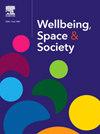Navigating water and sanitation environments in schools: Exploring health risk perceptions of children with physical disabilities using drawing
IF 2.4
Q2 GEOGRAPHY
引用次数: 0
Abstract
Ensuring universal access to safe water and sanitation remains a central goal of the United Nations Sustainable Development Goals (SDGs). However, persons with physical disabilities continue to encounter numerous barriers—stemming from capacity, environmental, and personal constraints—when accessing these facilities. This study aimed to (i) explore how children with physical disabilities navigated water, sanitation, and hygiene (WASH) environments in primary schools in Ghana and (ii) investigate their perceived health risks associated with these environments. Children were given prompts to draw and write about their school WASH contexts, followed by interviews to discuss their drawings. A thematic analysis of their narratives and artwork revealed several barriers, including physically inaccessible facilities, poor maintenance, and limited peer support or mobility aids. Commonly reported health implications included dehydration from inadequate water intake, diarrhoea, increased vulnerability to abuse, and psychosocial stress. The findings further showed that the type and severity of disability influenced the extent of these challenges. To advance SDGs 6, 4, and 3, strategies must be implemented to create safe, inclusive school environments that address the diverse needs of all learners.
求助全文
约1分钟内获得全文
求助全文
来源期刊

Wellbeing Space and Society
Social Sciences-Social Sciences (miscellaneous)
CiteScore
2.70
自引率
0.00%
发文量
46
审稿时长
124 days
 求助内容:
求助内容: 应助结果提醒方式:
应助结果提醒方式:


